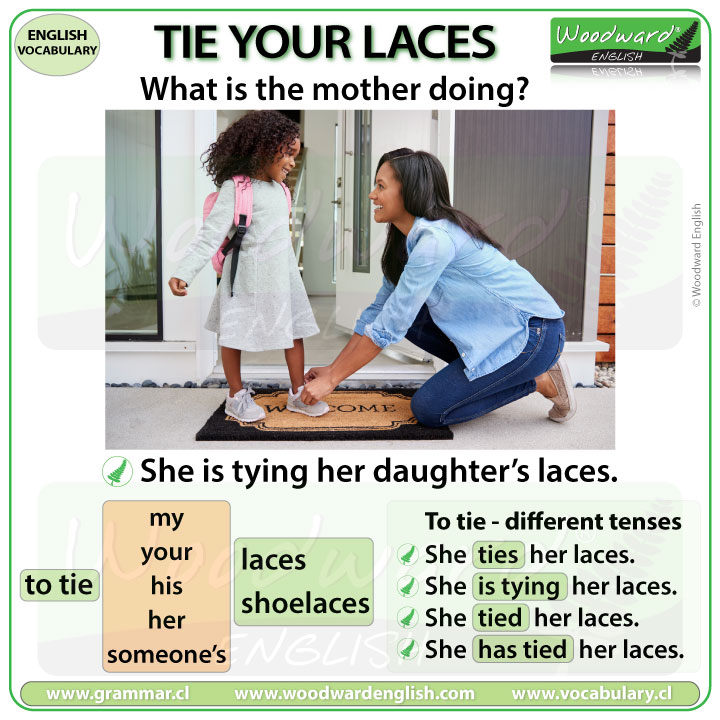Below is a transcript of what appears in the video lesson above.
Tie your laces
Here are some shoes.
What are these blue things called?
They are shoelaces.
They are also called laces.
Look at the photo in the video.
What is the mother doing? What verb do we use for this action?
- She is tying her daughter’s laces.
We have the infinitive TO TIE and then my/your/his/her/someone’s etc. and then laces or shoes laces.
TO TIE + my / your / his / her / someone’s + laces / shoelaces
- I tie my laces …. or…. I tie my shoelaces.
- You tie your laces …. Or…. you tie your shoelaces.
To Tie – Different Tenses
Let’s look at the verb TO TIE in different tenses.
- She ties her laces. (This is the present simple tense)
- She is tying her laces. (This is the present continuous tense)
- She tied her laces. (This is a simple past tense)
- She has tied her laces. (This is a present prefect tense)
Look at the next photo in the video. What is the woman doing?
- She is tying her laces.
Be careful, we generally us a possessive adjective (or a possessive noun) and not an article as happens in some languages..
- She is tying THE laces. (NOT correct – Incorrect)
- She is tying HER laces. (Correct)
Look at the boy in the video. What is he doing?
- The boy is tying his laces.
This is in the present continuous tense because it is something he is doing right now.
And now look at the next picture of the boy. What has the boy done?
- The boy has tied his laces.
We used this perfect tense because it is an action that has just been completed recently.
Remember that we use the possessive adjective HIS before laces.
And with the next photo. What is the father doing?
- He is tying his son’s laces.
Questions for you
Can you tie your shoelaces?
At what age did you learn to tie your laces?
Summary Chart

